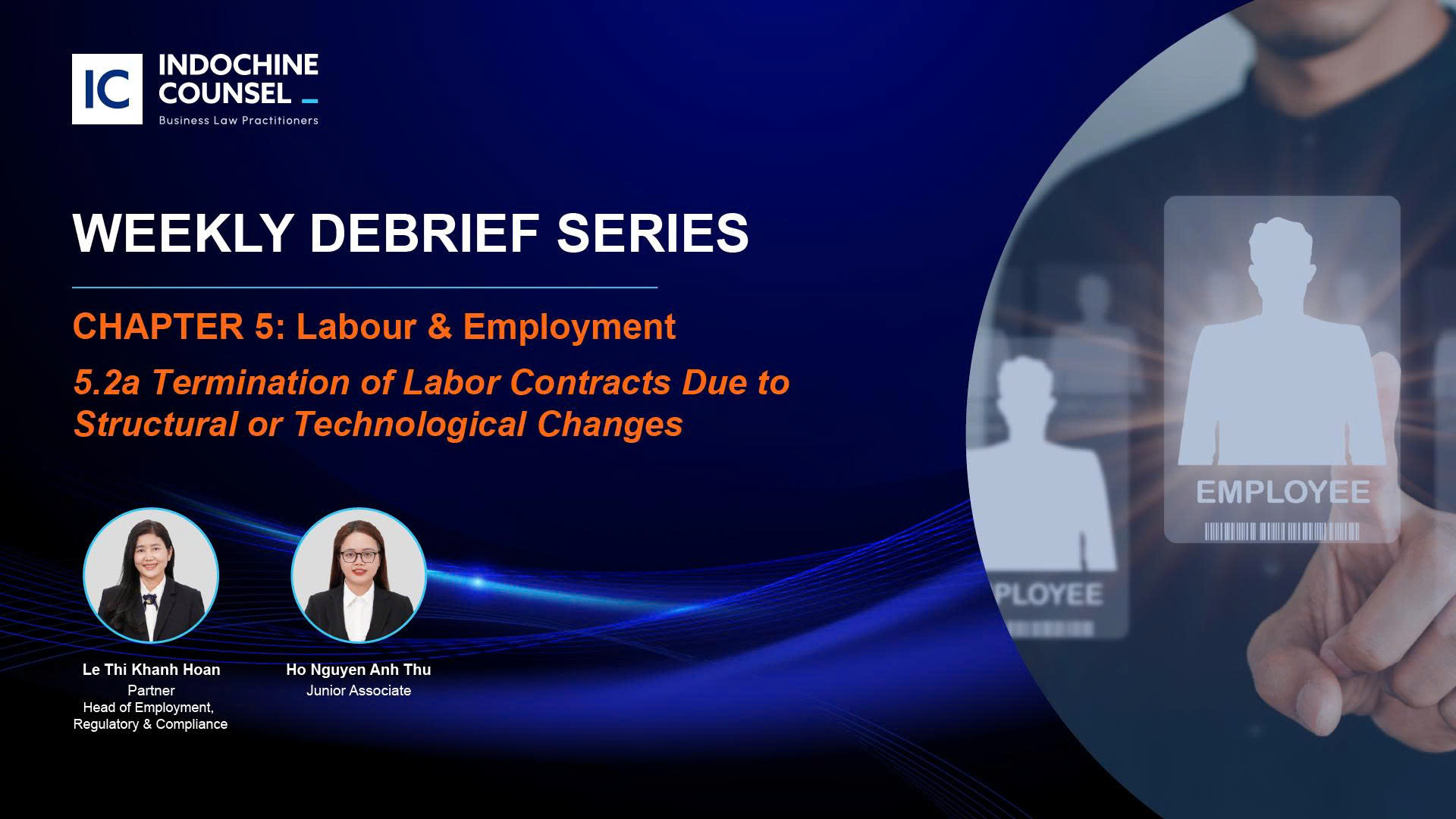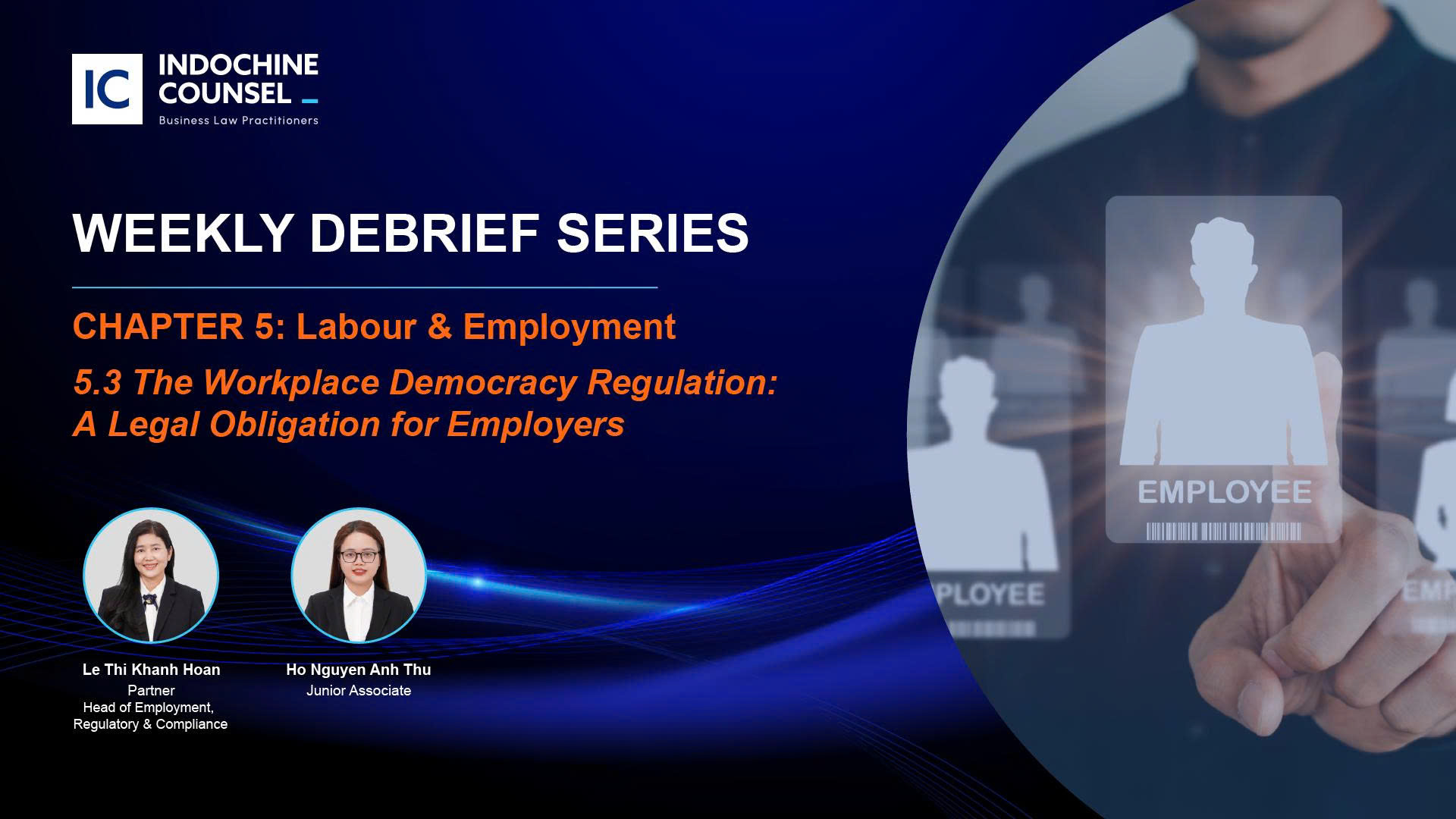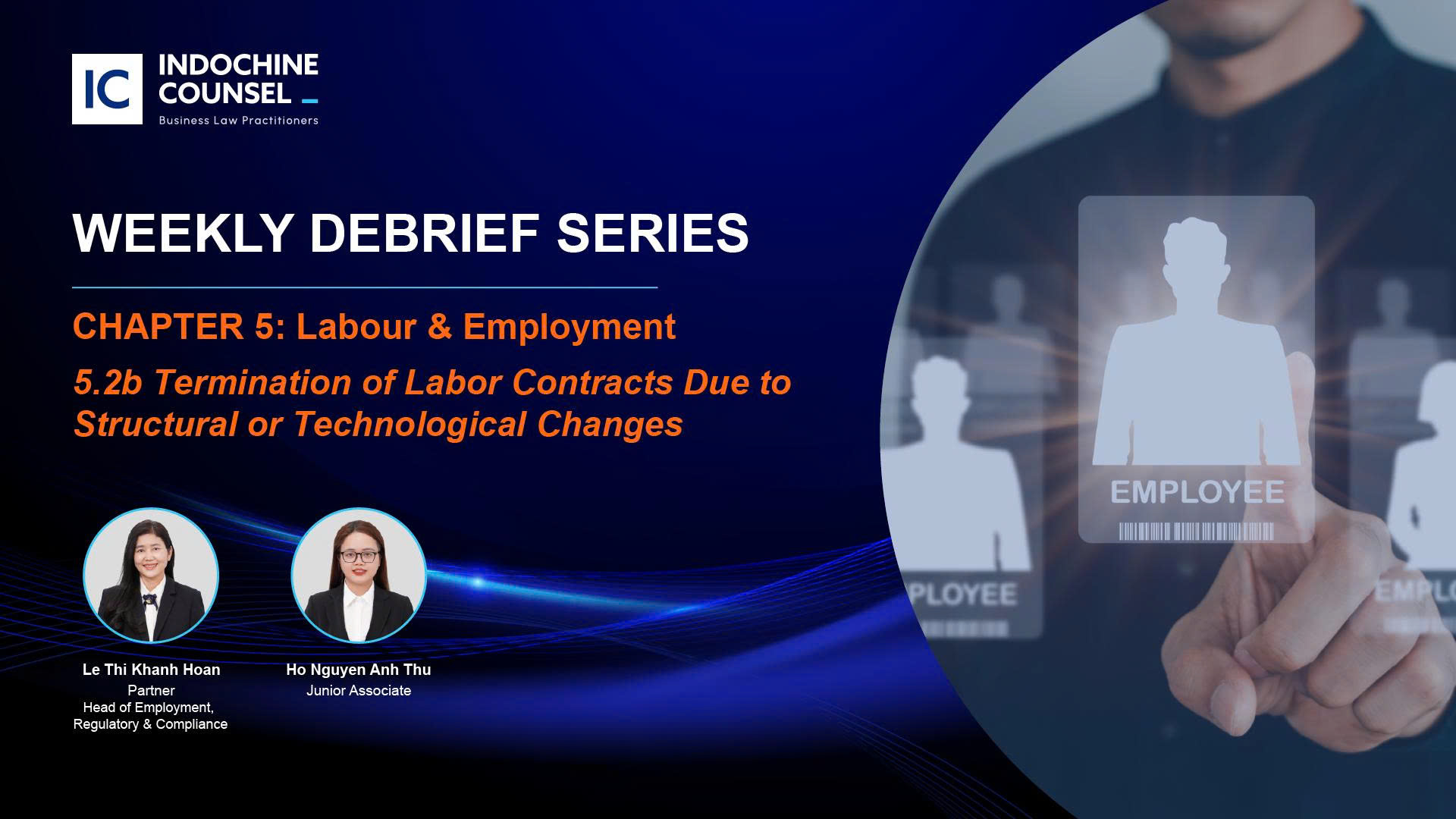
Ho Chi Minh City, 24 June 2025
The global economic landscape is experiencing unprecedented volatility. Declining orders, shifting supply chains, and rapid technological advancements have become common challenges for businesses across sectors. In Vietnam, industries such as garment manufacturing, information technology, and market research, are particularly impacted, with many companies compelled to restructure their operations to control costs and maintain competitiveness. These restructuring efforts often stem from legitimate business necessities that are beyond the proactive control of employers. This context raises a critical legal question:
Do employers have the unilateral right to terminate labor contracts due to structural or technological changes?
A Conditional Right – Not an Automatic Entitlement
Under Vietnamese labor law, the right to terminate labor contracts on the grounds of structural or technological changes is neither absolute nor automatic. Instead, it is a conditional right, exercisable only when two critical requirements are satisfied:
(i) provision of sufficient justification and
(ii) full compliance with statutory procedures outlined in the Labor Code.
This aims to ensure transparency and fairness while preventing employers from misusing restructuring as a pretext for arbitrary or unjustified termination. By doing so, it safeguards the legitimate rights and interests of employees and fosters equitable labor practices.
What Qualifies as Structural or Technological Changes?
The Labor Code refrains from providing a clear legal definition of “structural or technological changes.” Instead, it provides examples of scenarios that may fall under this category, including
(1) changes in organizational structure or labor reorganization;
(2) changes in production or business processes, technology, machinery, or equipment associated with the employer’s operations; and
(3) changes in products or the product structure.
While these categories provide general guidance, they remain broad and open to interpretation. Consequently, whether a specific change qualifies as valid grounds for termination often depends on the employer’s assessment and may be subject to judicial review if challenged.
For instance, a recent court case provides valuable insights into how these provisions are applied in practice. A company terminated its Head of Legal, citing a “structural change.” Initially, the company had engaged a foreign legal expert at a considerable cost. In 2021, seeking to reduce costs, the company transitioned to an internal legal department. However, the new structure proved ineffective, leading the company to dissolve the department and outsource legal services once again. The court ruled in favor of the company, accepting the restructuring to be a legitimate and reasonable structural change. The decision validated the termination, emphasizing the importance of context and reasonable justification in such cases.
Key Considerations for Employers: Ensuring Compliance and Mitigating Risk
Terminating labor contracts due to structural or technological changes can be a legally complex process. Employers must review these terminations carefully to ensure compliance with Vietnamese laws and mitigate potential legal risks. Below are key considerations:
The Change Must Be Genuine and Evidenced
The restructuring must reflect objective and verifiable business needs. Examples include department mergers, elimination of intermediary roles, adoption of new technology or upgrade systems, or transitions to remote or hybrid work models. Employers must ensure that these changes demonstrably impact the company’s organizational or personnel structure.
Demonstrate a Clear Link Between the Change and Workforce Reduction
Citing vague reasons such as “business difficulties” is insufficient. Employers must establish a clear and direct connection between structural or technological change and the decision to reduce the workforce. This requires comprehensive documentation, including board resolutions, restricting plans, financial statements, labor utilization plans, and organizational charts reflecting before-and-after structures. Such documentation strengthens the employer’s position by demonstrating that workforce reduction is both necessary and unavoidable.
Strictly Follow Statutory Procedures
Even where valid grounds for termination exist, failing to comply with any statutory procedures, such as, consulting with the internal trade union, conducting workplace dialogue, issuing a 30-day advance notice, or fulfilling statutory severance obligations, can result in serious legal consequences.
Prepare and Maintain Documentary Evidence
Should a dispute arise, courts place significant emphasis on objective and verifiable evidence. Employers should proactively prepare and retain materials that demonstrate:
- The occurrence of actual changes in business operations;
- The specific impact of these changes on the organizational structure and individual job positions; and
- That the termination decision was reasonable and necessary under the given circumstances.
In Part 2, we will delve deeper into the statutory procedures for lawful terminations under these circumstances. This encompasses
(i) the obligation to consult with employee representative organizations,
(ii) conduct workplace dialogue,
(iii) notify the competent labor authorities, and
(iv) Fulfilling statutory severance obligations.
These insights aim to assist employers in implementing restructuring measures in a legally compliant and sustainable manner.
—–
Seeking consultation or advice on labor regulations, contact our team via info@indochinecounsel.com or +84 28 3823 9640









